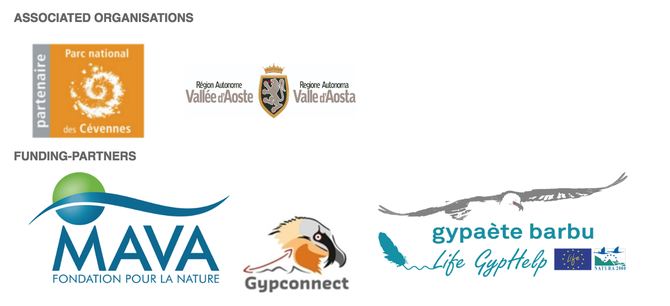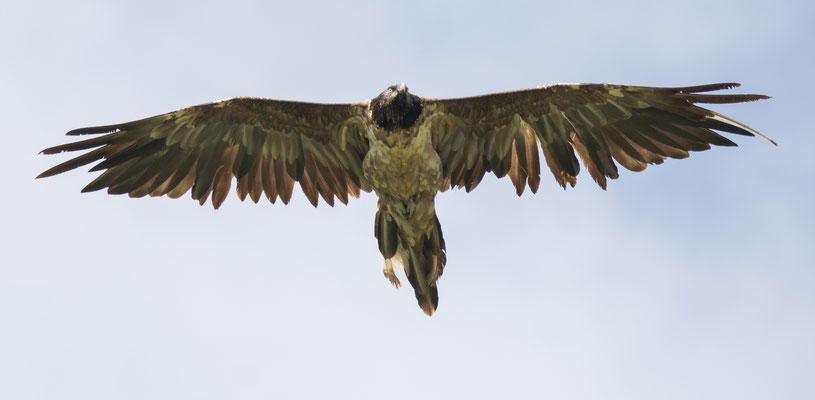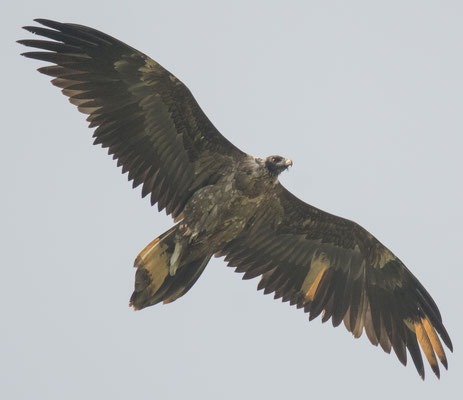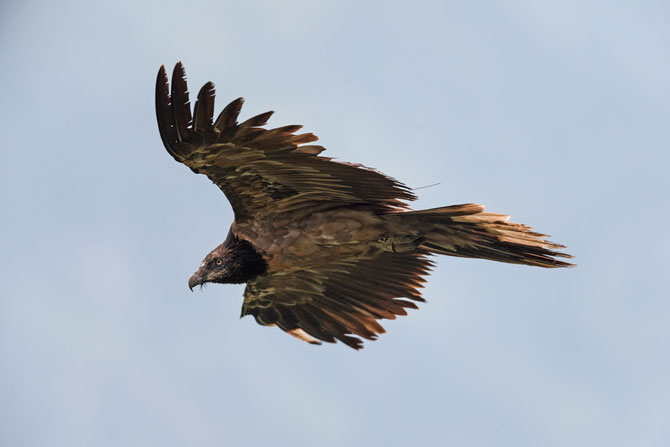
You hear us often talking about the age of certain Bearded Vultures or even mentioning their names. And you might ask yourself how come they can tell the difference? It is easy, and with a little practice, you can do it as well and actively contribute to the monitoring and conservation efforts of the species in Europe!
Bleaching some feathers of released birds
To help understand how effective our reintroduction efforts are, we need to monitor the survival and progress of the Bearded Vultures we release in the wild. To do so, we equip the birds with GPS tags ahead of their release to track their movements, but it is also useful to be able to identify them in the wild. So, all birds released in the different reintroduction projects by our partners get a unique code on their rings and we also bleach some feathers according to a European scheme overseen by the International Bearded Vulture Monitoring Network (IBM), which is coordinated by the Vulture Conservation Foundation (VCF). This enables all partners not only to recognise their “own” birds, but we can distinguish all birds in Europe.
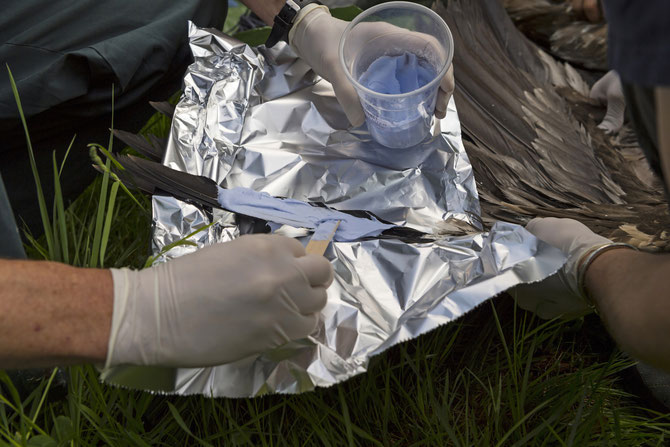
To bleach the feathers, we use normal bleaching detergents, just like for hair. Feathers are no different in their structure than hairs. It is crucial not to bleach the feathers too much, otherwise, they get damaged too quickly and we only bleach some few feathers per bird. If you report your sighting of a bird with these feather markings, the local partner will be able to tell you the name and origin of the observed bird.
Moulting and plumage
These bleached feathers will disappear with the first moult of the respective feather. But that might take up to four years after hatching. Bearded Vultures moult only some few feathers per year, in a pre-defined schedule. First, the inner primaries moult in the 2nd calendar year (CY), followed by the adjoining primaries and secondaries. This pattern of moulting primaries and secondaries allows us to tell the age of an observed and unmarked bird. Until the 5th CY, some feathers of the first plumage are still visible and therefore we can tell the hatching year. That is also the time when the head starts to change its colour from black to white. Furthermore, they start to extensively bathe in mud containing iron oxide that eventually gives them the rusty orange to red colour. First, only a few white feathers are visible. That is also the time Bearded Vultures can start to reproduce. Even though they reach sexual maturity around 5-6 years old, the first successful breeding usually occurs when they are around 8-9 years old.
In the documents available for download below (Italian, French and German), you can see how to identify the age class of a Bearded Vulture based on its plumage.
Adobe Acrobat Document 465.3 KB
Adobe Acrobat Document 525.4 KB
Adobe Acrobat Document 667.0 KB
International Bearded Vulture Monitoring Network

The International Bearded Vulture Monitoring Network (IBM) is a unique international collaboration led by the Vulture Conservation Foundation between national & natural parks and non-governmental organisations to coordinate the monitoring activities for European Bearded Vulture populations. Through this network, data about the Bearded Vulture in Europe is collected, shared and made available to everyone working for the conservation of the species. The IBM-network also uses this data and comes together to discuss conservation strategies and priorities for this species on an international level. There are currently 16 partners and two associated organisations part of the IBM-network.
If you have any Bearded Vulture observations and photographs in the Alps, please report them here.
